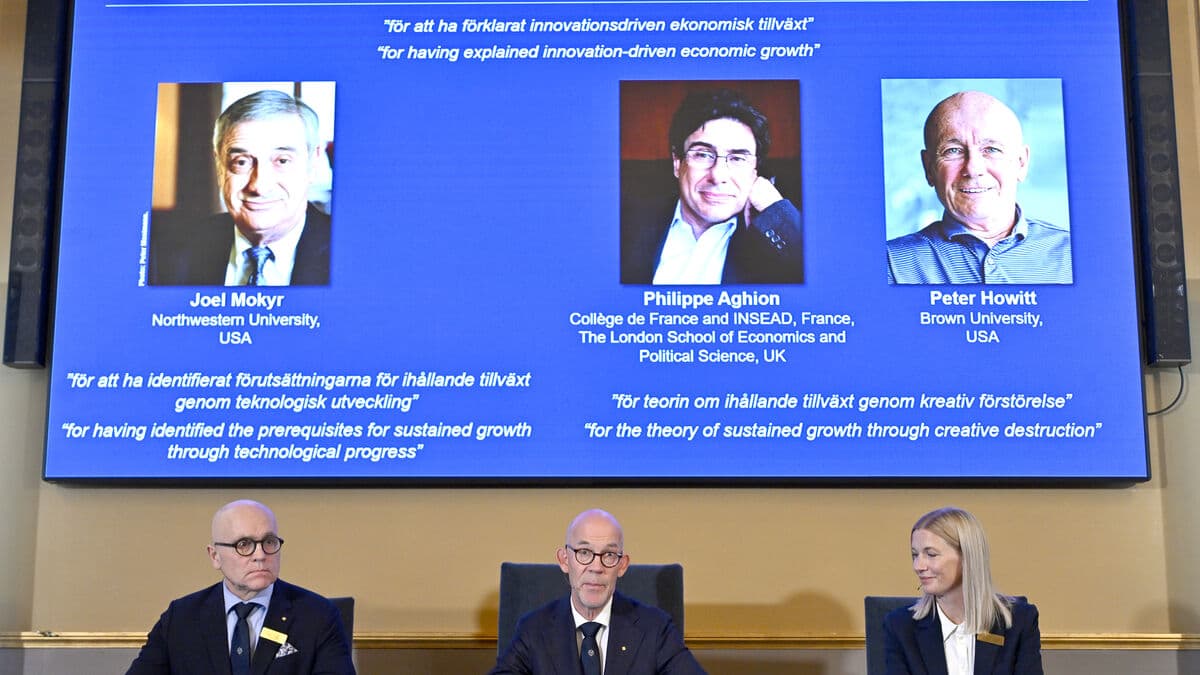It is a surprised Philippe Aghion, French researcher active at, among other things, Collège de France in Paris, who participates via link at the press conference.
Although he initially says he has trouble finding the words, they soon flow from him when he is asked to comment on whether he now sees any threats to growth.
I see quite dark clouds gathering, when it comes to trade barriers and other obstacles to openness, he says.
Stream of inventions
The three economics prize winners together explain the processes behind the sustained growth that the world has had in principle for the last two hundred years.
It's about a stream of new technological inventions, which in turn knock out old ones in a process called "creative destruction".
According to Aghion, AI will accelerate the creative destruction.
With technological revolutions like AI, there is always a concern about unemployment, he says.
But it doesn't have to be that way, according to Aghion. At previous technological revolutions such as the steam engine, electricity, and IT, the same concern for jobs has existed, he says.
But then it hasn't turned out that way.
With new technology, production and demand increase, which in turn create more jobs. However, good education systems and competition laws are required for it to work.
This year's prize has been divided into two and Aghion shares his half with Canadian Pete Howitt. Together, they have developed a mathematical model that explains the above-mentioned process.
The other part of the prize goes to economic historian and Dutchman Joel Mokyr. He has used historical data to show what conditions are required for sustained growth: it's not enough to know that something works, but you also need to understand why it works.
Obstacles to growth
The prize winners have also been able to identify the obstacles that can arise to achieve economic growth.
If any of these factors that Mokyr has identified are not in place, for example, that there is resistance to change or that companies become so strong that they prevent new ideas, it can prevent economic growth, says the Chairman of the Economics Prize Committee John Hassler to TT.
The total prize amount is eleven million kronor.
Corrected: In an earlier version, the wrong number of female prize winners was stated in the fact box, and Peter Howitt had the wrong nationality.
Johanna Ekström/TT
Tobias Österberg/TT
Olle Lindström/TT
They receive the Economics Prize 2025
TT
Joel Mokyr, active at Northwestern University, USA.
Philippe Aghion, active at Collège de France and INSEAD in Paris and London School of Economics and Political Science in London.
Peter Howitt, active at Brown University, USA.
The first of the Swedish Central Bank's economics prize in memory of Alfred Nobel was awarded in 1969. Since then, it has been awarded 52 times to a total of 86 prize winners.
Three of the 86 prize winners over the years have been women.
Here are the prize winners in recent years:
2025: Joel Mokyr, Philippe Aghion, and Peter Howitt.
2024: James A. Robinson, Simon Johnson, Daron Acemoglu.
2023: Claudia Goldin.
2022: Philip H. Dybvig, Douglas W. Diamond, Ben S. Bernanke.
2021: David Card, Joshua D. Angrist, and Guido W. Imbens.
2020: Paul R. Milgrom, Robert B. Wilson.
2019: Abhijit Banarjee, Esther Duflo, Michael Kremer.
2018: William D. Nordhaus, Paul M. Romer.
2017: Richard H. Thaler.
2016: Oliver Hart, Bengt Holmström.
2015: Angus Deaton.
2014: Jean Tirole.
2013: Eugene F. Fama; Lars Peter Hansen, Robert J Shiller.
2012: Alvin E. Roth, Lloyd S. Shapley.
2011: Thomas J. Sargent, Christopher A. Sims.
Source: Royal Swedish Academy of Sciences





